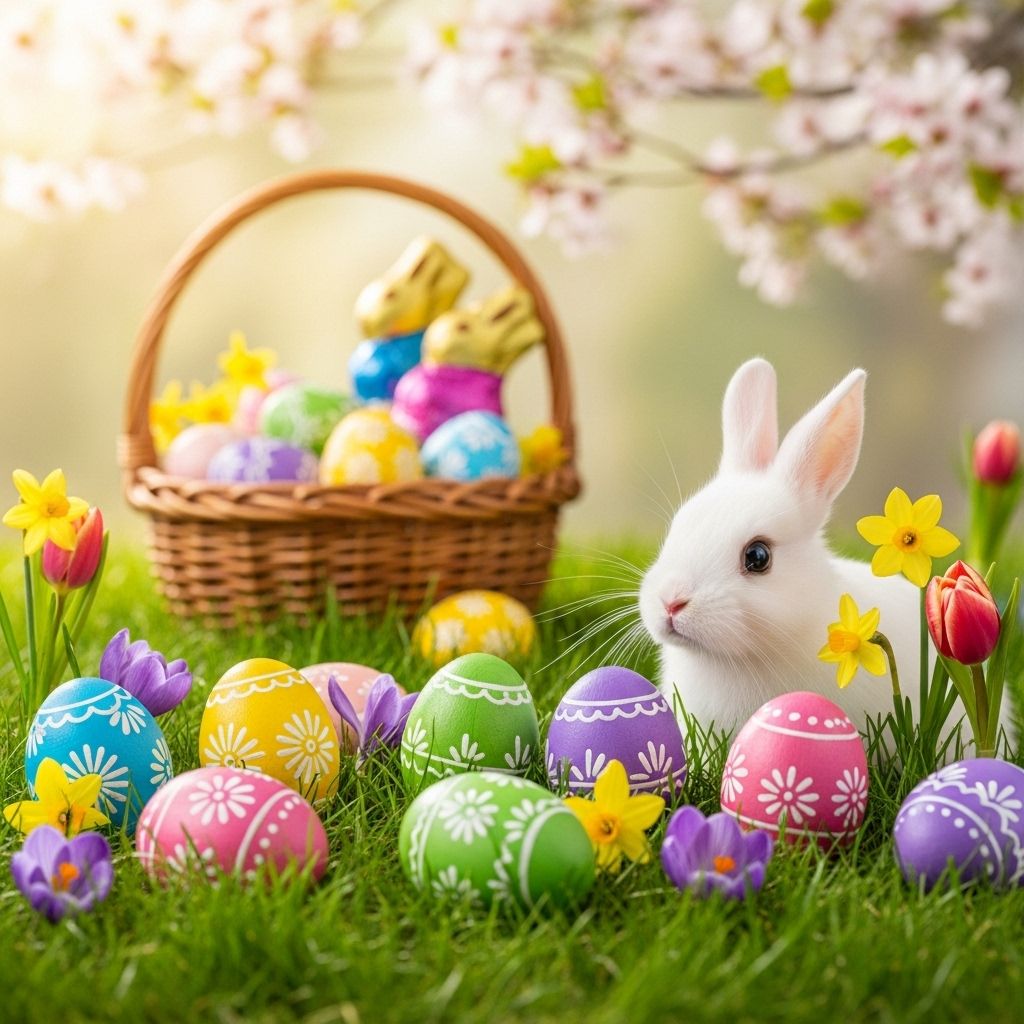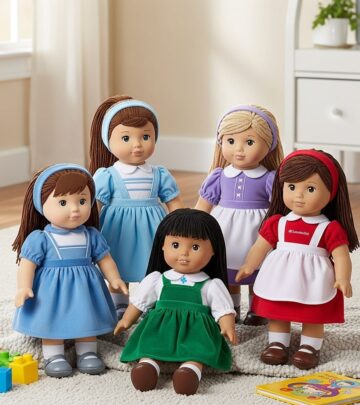Fascinating Easter Facts: Eggs, Bunnies, Traditions & History
Easter blends sacred rituals and playful customs into a vivid celebration of renewal.

Introduction
Easter is one of the world’s most cherished holidays. For Christian communities, it marks the resurrection of Jesus Christ, forming the spiritual heart of the faith. Over centuries, however, Easter has developed a vibrant tapestry of traditions, mixing religious observance with folklore, springtime celebrations, and playful customs like egg hunts and visits from the Easter Bunny. Whether you celebrate Easter for its spiritual significance, enjoy its culinary delights, or look forward to colorful activities with family, these facts will enhance your understanding and enjoyment of this beloved springtime festival.
The Religious Roots of Easter
- Easter commemorates the resurrection of Jesus Christ, marking the central event in Christian belief.
- The holiday’s timing is based on the lunar calendar: Easter falls on the first Sunday after the first full moon following the spring equinox.
- The oldest records of Easter celebrations date back to the 2nd century. While Christians likely marked it earlier, these records are among the first written references.
- The name “Easter” is thought to derive from Eostre, an Anglo-Saxon goddess of spring and fertility. The season’s timing and many symbols reflect older, pre-Christian springtime festivities.
- In many churches, the season of Eastertide begins on Easter Sunday and continues for 49 days, ending at Pentecost.
- Eastern Orthodox Christians call Easter “Pascha,” derived from the Hebrew “Pesach” (Passover), emphasizing its Biblical significance and connection to Jewish traditions.
Easter is considered the most significant holiday on the Christian calendar, representing hope, renewal, and new life for believers.
Historic and Unique Christian Traditions
- The Easter Vigil, held on Holy Saturday night or very early Easter morning, is considered the most important service in many Christian denominations, marking the start of celebrations.
- Some churches, like the Moravians, host a Sunrise Service outdoors at dawn on Easter Sunday to symbolize hope and the resurrection.
- In Orthodox Christianity, red-painted eggs symbolize the blood of Christ.
- A Western custom, “flowering the cross,” decorates a bare cross with fresh flowers to represent new life.
- The Paschal candle is blessed and lit in many churches as a symbol of Christ’s resurrection and presence throughout Eastertide.
- Catholic churches perform foot-washing on Maundy Thursday to remember Jesus washing his disciples’ feet during the Last Supper.
- Easter lilies are commonly displayed as symbols of purity and renewal.
- Christian pilgrims often walk the Via Dolorosa in Jerusalem on Good Friday, retracing Jesus’ path to crucifixion.
- Women sometimes wear Easter bonnets—decorative hats adorned with flowers and bright colors.
Easter baskets, nowadays filled with candy and toys, evolved from the blessing of goods at the end of Lent, merging spiritual and secular elements.
The Symbolism and Story of Easter Eggs
Easter eggs are among the holiday’s most familiar icons, and their history is richer than many realize.
- Eggs have symbolized rebirth and fertility in pagan and Christian traditions, marking spring and the miracle of resurrection.
- One theory suggests that eggs were part of ancient Anglo-Saxon spring festivals honoring the goddess Eostre, and were sometimes buried to encourage fertility.
- Christians eventually adopted the egg as a symbol of the empty tomb of Jesus. Some associate the tradition of egg hunts with the joy the Apostles experienced on finding Jesus’ tomb empty.
- During Holy Week, Christians were once forbidden to eat eggs; after the fast, eggs were decorated and eaten to celebrate Easter.
- Decorated eggs can be traced to Orthodox Christians using red dye, symbolizing Christ’s sacrifice, while other cultures adopted a rainbow of colors.
- The Easter egg hunt, popular today, has roots in 16th-century Europe, with Martin Luther reportedly organizing hunts to reflect the discovery of the Resurrection.
Eggs, in all their painted glory, remain a central, joyous element of the holiday and a favorite among children and adults alike.
The Easter Bunny: Myth and Origins
Alongside eggs, the Easter Bunny is perhaps the best-known secular symbol of the holiday, delivering baskets and hiding treats for children each spring.
- The Easter Bunny legend comes from Germany, where the “Oschter Haws” (Easter Hare) was said to lay colorful eggs for good children.
- German immigrants brought the tradition to America in the 18th century, particularly in Pennsylvania.
- Early nests made for the Easter Bunny evolved into today’s decorative baskets.
- The bunny’s association with fertility may relate to rabbits’ prolific breeding in spring, aligning with the holiday’s themes of renewal.
- The Easter Bunny’s evolution into an egg-delivering figure is a result of merging pagan fertility lore with Christian practices.
The Easter Bunny is now a mascot for many Easter festivities, inspiring crafts, treats, and joyful anticipation each year.
The Joys of Easter Candy and Sweet Treats
No modern Easter feels complete without an array of candies, from chocolate bunnies to colorful jelly beans. These treats are more than just delicious—they have history and significance.
- Chocolate eggs date back to early 19th-century Europe, with French and German chocolatiers leading the way in creating molded, hollow eggs.
- Jelly beans and marshmallow chicks (like Peeps) are classic American Easter staples. Peeps have even inspired collectors and festive displays.
- The tradition of giving Easter baskets full of treats stems from the practice of ending Lent, during which many people abstain from sweets and rich foods.
- Easter is one of the top candy-selling holidays in the United States, second only to Halloween.
For many families, sharing and enjoying Easter candy is a highlight of the season, sweetening the holiday alongside its larger traditions.
How Is the Date of Easter Decided?
- Easter does not have a fixed date and may fall anywhere between March 22 and April 25 in Western Christianity.
- The determination was established by the Council of Nicaea in 325 AD: Easter falls on the first Sunday after the first full moon following the spring equinox.
- Eastern Orthodox Christians often celebrate Easter on different Sundays, using the Julian calendar instead of the Gregorian.
This lunar-based system links Easter closely with nature’s rhythms and the cycles of the seasons.
Fun and Surprising Easter Facts
- Americans consume over 16 billion jelly beans at Easter each year.
- The world’s largest Easter egg was over 25 feet high and weighed more than 8,000 pounds.
- The White House Easter Egg Roll, started in 1878, is an annual tradition on the South Lawn for children and their families.
- In parts of Europe, such as Switzerland, the Easter Cuckoo—not the bunny—delivers Easter eggs!
- In Finland and Sweden, children dress up like witches and go door-to-door for treats, similar to Halloween customs.
- British folklore sometimes features foxes, not rabbits, as egg deliverers in certain regions.
- The most popular Easter candies include chocolate bunnies, Peeps, Cadbury creme eggs, and jelly beans.
- In Poland and the Czech Republic, water-splashing traditions celebrate purification and new life on Easter Monday.
- Easter parades, bonnets, and fancy outfits were historically a sign of renewal and good luck for the year ahead.
Global Easter Customs
Each culture adds its own flavor to Easter festivities, incorporating local customs and flavors into the celebration:
- Australia: The “Easter Bilby” is promoted instead of the rabbit to raise awareness for endangered native animals.
- Italy: Celebrations include spectacular processions and fireworks, especially in Florence, where a cart packed with fireworks is ignited in front of the cathedral.
- Greece: People smash red eggs together, and some towns host dramatic midnight celebrations or even “rocket wars” in Chios!
- Mexico: There are vibrant processions, colorful confetti eggs (cascarones), and joyful community gatherings.
- United States & UK: Children hunt for eggs in gardens and parks, enjoy chocolate bunnies, and exchange greetings with family and friends.
Despite differences, the unifying themes of renewal, joy, and togetherness make Easter a treasured holiday worldwide.
Famous Easter Foods Around the World
- Lamb is a traditional Easter meal in many countries, symbolizing sacrifice and springtime.
- Hot cross buns, marked with a cross of icing or dough, are a beloved Easter treat in the UK and its former colonies.
- Paska bread is baked in Eastern European homes, often rich with butter, eggs, and raisins.
- Pashka is a creamy Russian dessert made from cheese and dried fruit, enjoyed after Lent.
- Egg-based dishes—quiches, pies, and salads—are popular in many places, utilizing the symbol of new life.
Frequently Asked Questions (FAQs) About Easter
Q: Why are eggs so central to Easter?
A: Eggs symbolize rebirth and new life in spring, making them a fitting representation of the resurrection in Christian belief, as well as a holdover from older, pre-Christian spring celebrations.
Q: How did the Easter Bunny tradition begin?
A: The modern Easter Bunny originated with German immigrants who brought tales of an egg-laying hare, “Oschter Haws,” to America. The bunny soon became a beloved part of Easter folklore.
Q: How is the date for Easter chosen each year?
A: Easter falls on the first Sunday after the first full moon following the spring equinox, placing it between March 22 and April 25 in the Western calendar.
Q: What is the meaning of the red eggs in Orthodox celebrations?
A: Red symbolizes the blood of Christ, while the egg stands for new life and the empty tomb, making the custom deeply symbolic.
Q: Why do we give Easter baskets?
A: Easter baskets evolved from a blend of medieval blessing ceremonies after Lent and the German tradition of the Easter Bunny laying eggs in children’s nests. Today, baskets brim with candy, toys, and signs of spring.
Table: Quick Easter Facts
| Fact | Detail |
|---|---|
| Origin of the word “Easter” | From “Eostre,” Anglo-Saxon goddess of spring |
| Date | First Sunday after the first full moon post spring equinox |
| Oldest Easter celebration rec. | 2nd century AD |
| Symbolic color of Orthodox eggs | Red (Christ’s blood) |
| Popular Easter treat | Chocolate eggs, jelly beans, marshmallow chicks |
| World’s largest Easter egg | Over 25 feet high, 8,000+ lbs |
| Unique Australia symbol | Easter Bilby |
Final Thoughts
Whether you view Easter through a lens of faith, delight in its whimsical customs, or simply embrace the chance to gather and celebrate spring’s arrival, this holiday is rich with history, meaning, and joy for all. From egg hunts and bunnies to contemplative worship services, Easter’s many layers make it a unique and enduring celebration connecting generations and communities around the globe.
References
- https://www.thefactsite.com/easter-facts/
- https://www.foxnews.com/lifestyle/easter-numbers-facts-religious-holiday-secular-activities
- https://www.pureflix.com/insider/easter-egg-history-and-tradition
- https://www.countryliving.com/life/a41715/easter-bunny-origins/
- https://www.mebondbooks.com/2023/04/10/origins-of-the-easter-bunny/
- https://town-n-country-living.com/category/easter
Read full bio of medha deb












